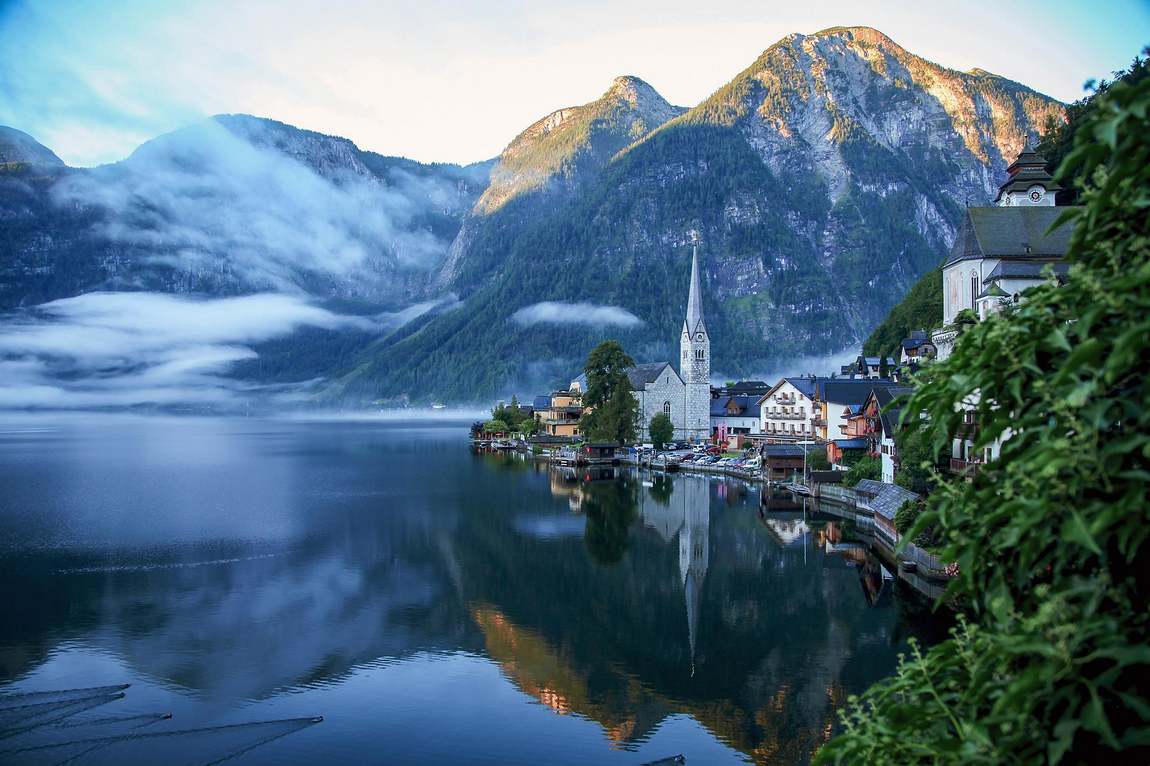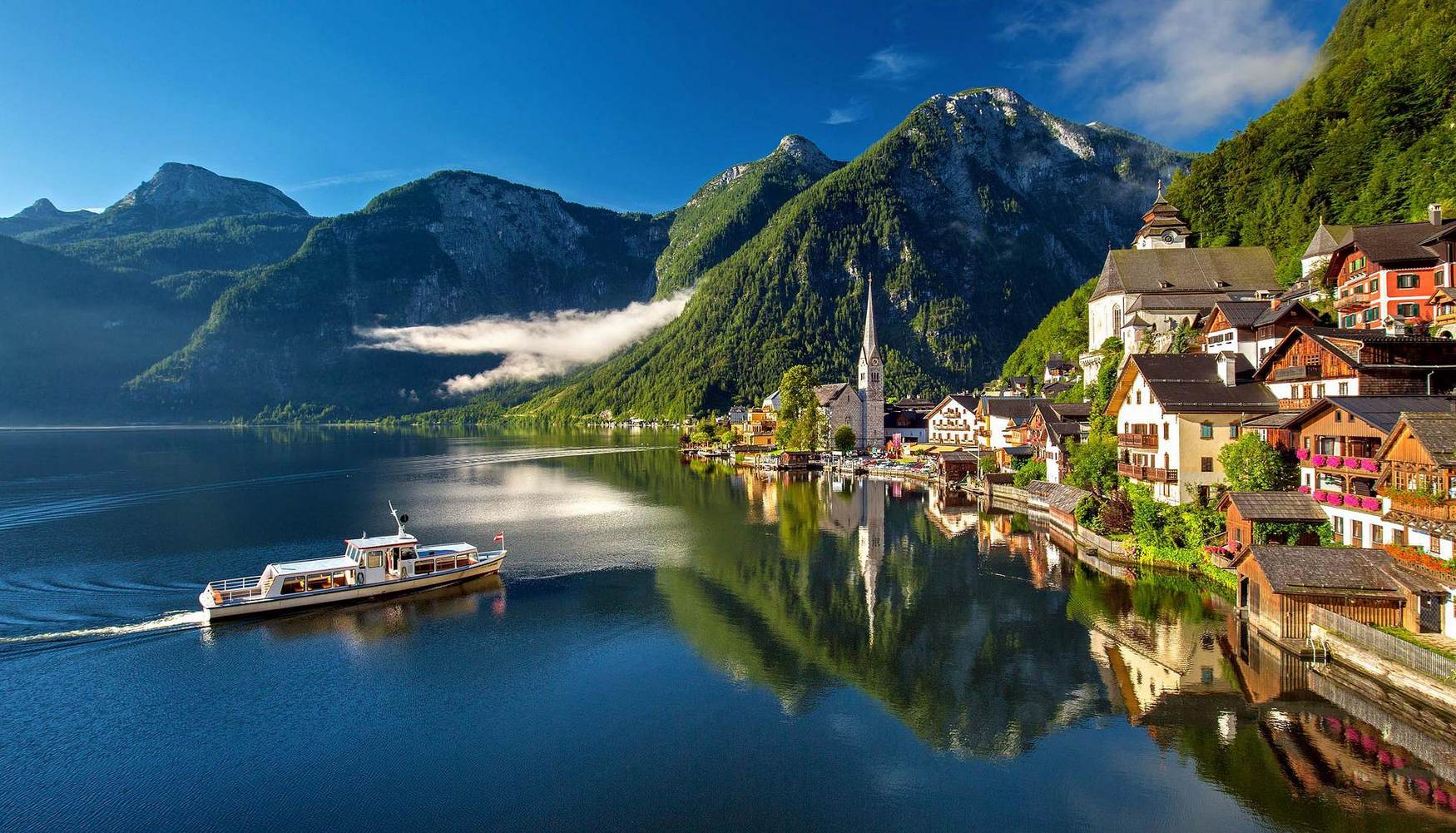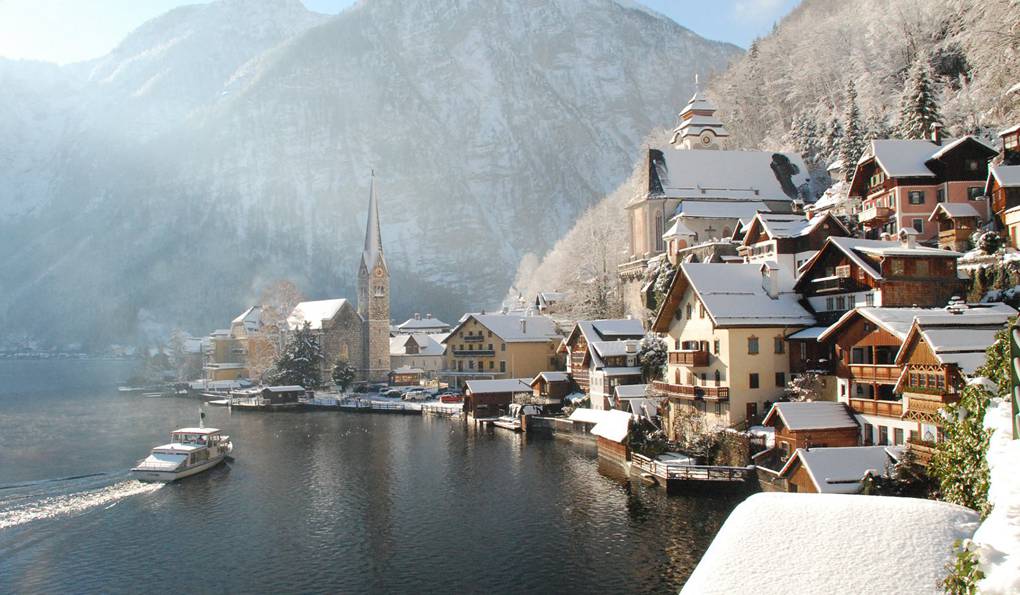The tiny Austrian community of Hallstatt is not exactly a children's attraction, but families with children who come here for a tour of the salt mine will find much more to enjoy. Nestled in a gorge in the Dachstein mountain range on the shores of Lake Halstatt, the community is home to less than a thousand people.

Halstatt lake (Hallstattersee)
The village is quite difficult to get to, but that is the attraction for tourists, especially young ones. The only way to get there is by ferry or boat across the lake. On the way, you can't help but marvel at the mountain panorama, the sharp spire of the church and the houses that seem to climb the slopes. The lake is surrounded on all sides by natural beauty, creating the idyll so sought after by tourists.
The lake, with a surface area of approximately 8.55 km2 and a maximum depth of 125 metres, is formed by the Traun River. The emerald green Hallstättersee remains as pristine as it was centuries ago. Local fishermen catch fish that can be prepared and served in one of the local restaurants.
Lake Hallstatt offers many opportunities for outdoor activities: fishing, swimming, rowing, diving, boating, cycling or walking in the woods around the town and lake.
Halstatt on the map of Austria

Hallstatt, which can be found in every Austrian tourist guide, is located in Upper Austria, in the lake region of Salzkammergut and in the region of Gmunden. The most common way to reach Hallstatt is from Salzburg, which is only 70 km away. It is also possible to reach Halstatt from Vienna (290 km), Munich (208 km) and Innsbruck (250 km).
If you come to Hallstatt by car, you should be aware of the peculiar location of the car parks — they are in the tunnels on the way to Halstatt, not in the town itself. From the tunnels, special lifts take visitors up to the footpaths.
Places to visit
The buildings are indeed bizarre due to the limited space, but the community has everything a town should have - even the main square and the local history museum.
Despite the fact that the people of Hallstatt are quite ordinary, everything here seems rather toy-like, even the cemetery. Because there's not enough space for burials, it's customary to exhume the bones every 10 years, dry them in the sun, paint them and display them in a special vault, the ossuary.
But such a peculiar attraction can be avoided for the sake of other surprising discoveries. For example, it is easy to count the number of houses in this particular place, or to learn that most of the garage doors in Hallstatt open directly onto the lake, because they were used to store boats rather than cars.
But the real gem of these places is nature. The mountains surrounding the small town seem impregnable, but in fact there are plenty of paths along the slopes. Want to see a mountain stream with a waterfall and an ice garden? Take one of the many trails up the mountain (a detailed map and signposts make it easy to get there). If a child can't cope with the long walks, take the funicular up to the viewing platform, which offers views over Lake Hallstatt and the small villages along its shores. A walk around the lake is equally enjoyable, and the local swans will be happy to meet you. If the ferry takes you to Halstatt, you can hire a boat and explore the town.
As the funicular leads to the entrance of the Halstatt Salt Mine, we recommend combining a walk around Halstatt with a visit to the mine. Obertraun, 4km from the village, is the starting point for a walk to the mysterious Dachstein caves, the Ice Cave and the Mammoth Cave. Obertraun is also home to the Five Fingers lookout point, which overlooks the abyss at an altitude of 2,100 metres.
One of the main advantages of Hallstatt is its seclusion and isolation from the noise of the big cities, so it is a good idea to come here in the off-season when there are fewer tourists.











